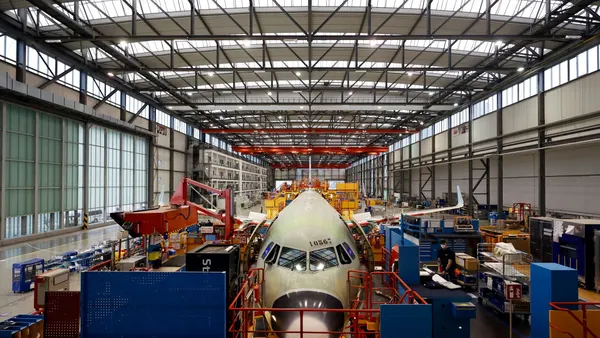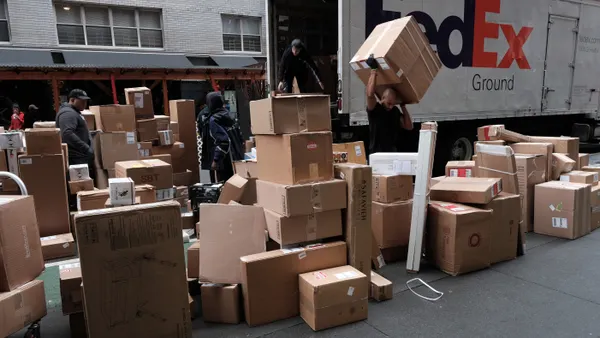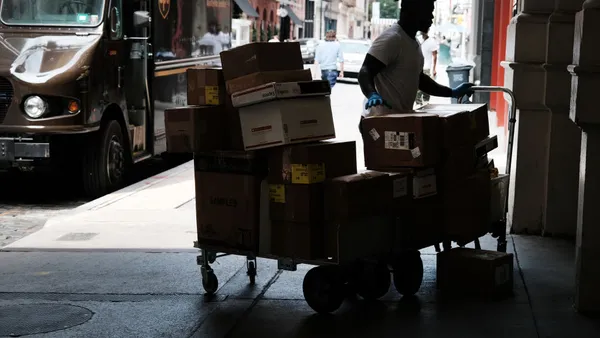Supply chain visibility is a business necessity, but unfortunately companies don’t always have the luxury of full transparency into their supply chains. According to IBM, 87 percent of chief supply chain officers (CSCOs) say it is extremely difficult to predict and manage supply chain disruptions and 84 percent of them cited lack of visibility as their biggest challenge.
Retailers need to start planning early - up to six months before the next selling season - and demand variables like fashion trends, economic conditions and weather are impossible to predict with accuracy. Supply chain visibility plays an important role in demand forecasting. Even after retailers complete their forecasting, there is still a lot that can happen along the supply chain journey to the final destination. Companies need to be able to quickly execute on what they learn once they gain visibility into their supply chain.
To best illustrate the complexity of the supply chain and all that goes into getting a product from point A to point B, let’s follow the path of a green sweater on its trip from a manufacturing factory in China to its forecasted final destination of Savannah, Georgia. The journey may not be as straightforward as you think!
The situation
A popular retailer orders 500,000 green sweaters from a Chinese manufacturer for delivery to Savannah. Once manufactured, a motor carrier picks up the sweaters from the manufacturer to transport it to the port for international delivery. While the sweaters are in transit, Savannah reports record warm temperatures (decreasing demand) and consumer demand for the sweater spikes in the Chicago area due to a celebrity sharing a photo of herself wearing the sweater on social media.
Meanwhile, the sweaters continue their journey from the vessel to a port in South Korea where the shippers learn that there is congestion in the Savannah port, potentially delaying the estimated time of arrival (ETA). Another unplanned wrinkle arises due to unseasonably cold temperatures in Dallas, increasing demand for the retailer to send more green sweaters to Texas. The retailer also learns that the sweater is starting to trend in the 50 to 60 year-old market in Florida, rather than the 25 to 35 demographic originally predicted. While all these factors play out, the vessel arrives from South Korea to a port in Savannah. Once in port, motor carriers arrive to take the green sweater to six different distribution centers (rather than the originally planned - one center). Then, additional motor carriers come to the distribution centers to deliver the sweater to 500 stores.
The solution
During the green sweaters’ travel from manufacturer to distributors, multiple issues arose. The retailer saw a spike in demand for the sweater in three additional places and a drop in demand for the sweater in the originally intended location. The record-high temperatures in Savannah caused the retailer to reallocate the sweater into different markets, including real-time shipments to Dallas, Chicago and Florida to meet unexpected customer demand. Real-time visibility into shifts in demand and activity along the supply chain provided by the supply chain logistics platform allowed the retailer to use the platform to reallocate resources and more accurately plan for the arrival of the shipment, despite unplanned delays due to external factors.
The outcome
Due to the retailer’s ability to make quick decisions during the trans-Atlantic shipping, the green sweaters sold out in the newly added markets. The retailer avoided what could have been a financial disaster had it not been agile during the shipment process.
Companies that receive real-time data during the shipping process can react quickly to issues that arise. Weather events, trending social media and demographic shifts can’t always be predicted, but the accuracy of demand forecasting is improved with the use of technology, particularly artificial intelligence (AI). With AI-driven recommendations, users can anticipate exceptions in real time, creating and executing an optimal resolution before a problem arises. By gaining first- and last-mile shipment visibility, retailers can receive enhanced visibility and control over their shipping issues to improve customer service and deliver the product to the right place at the right time.
For more information on how Blume Visibility and Logistics can help increase your supply chain efficiencies visit: https://www.blumeglobal.com/visibility/ .









